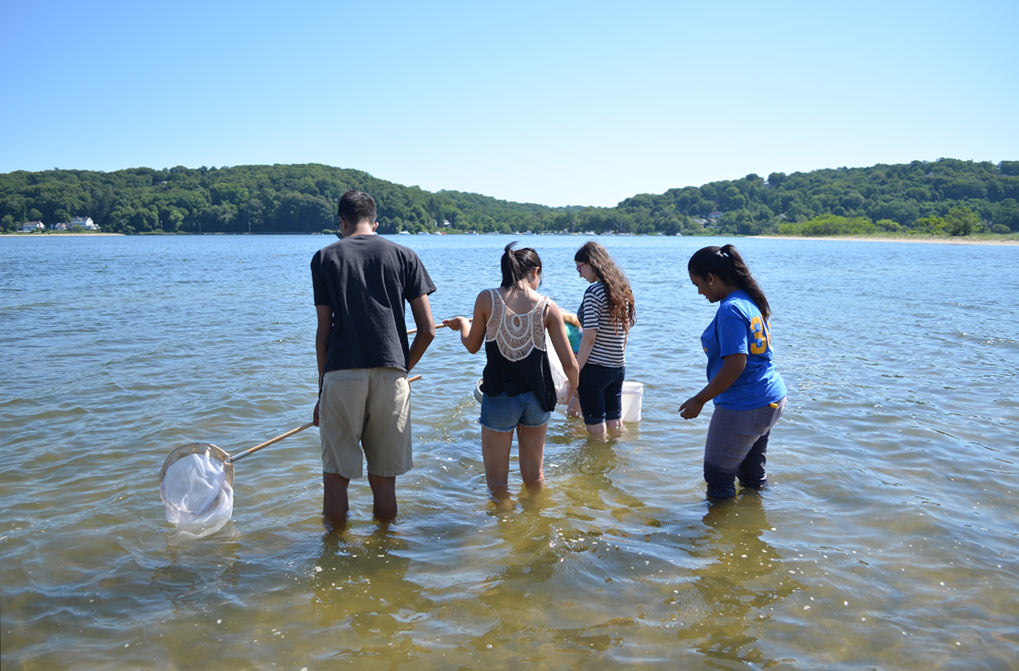DNA Barcoding at the DNA Learning Center
The Do Everything Experiment
Many science educators struggle to bring the process of science through authentic research to their students. DNA barcoding fulfills the promise of modern, Internet-enabled biology—allowing students to work with the same data, with the same tools, at the same time as high-level researchers. Just as the unique pattern of bars in a universal product code (UPC) identifies each consumer product, a short "DNA barcode" (about 600 nucleotides in length) is a unique pattern of DNA sequence that can potentially identify any living thing. DNA barcoding projects can stimulate independent student thinking across different levels of biological organization, linking molecular genetics to ecology and evolution—with the potential to contribute new scientific knowledge about biodiversity, conservation biology, and human effects on the environment. DNA barcoding also integrates in vivo observations, in vitro biochemistry, and in silica bioinformatics.
DNA barcoding provides a practical way to bring open-ended experimentation into biology classes. Projects can operate at various scales—from students investigating a local ecosystem, museum collection, or conservation issue; to joining an International Barcode of Life "campaign"; or exploring a taxonomic group or biome. Projects may also take on a forensic slant, exploring product fraud (such as mislabeled food items) or identifying the sources of products (such as plants or animals used in traditional medicines). The core wet lab and bioinformatic analyses can be mastered in a relatively short time, allowing students projects lasting a single academic term. Using DNA barcoding as the common method for multiple student projects decreases the need for intensive, expert preparation and mentoring—enabling meaningful research by large numbers of students.
To help realize this promise, we developed an integrated biochemical and bioinformatics (B&B) workflow for DNA barcode analysis. The biochemistry uses non-caustic reagents to isolate DNA from plant, animal, or fungus. The barcode region is amplified by polymerase chain reaction (PCR) and visualized by agarose gel electrophoresis. The barcode amplicons are mailed to GENEWIZ, Inc., a commercial sequencing service. Within 48 hours, finished barcode sequences are uploaded to DNA Subway, the DNALC's intuitive bioinformatics workflow for education developed under the National Science Foundation (NSF) CyVerse project.
The Blue Line of DNA Subway includes all tools needed to visualize and edit barcode sequences, search the GenBank database for matches, align sequences, and construct phylogenetic trees. The Blue Line includes web applications that heretofore could only be used as stand-alone applications—including an electropherogram viewer/editor and a "zoomable" sequence aligner/barcode viewer. An export feature simplifies barcode sequence submissions to GenBank, automatically providing sequence files, associated metadata, and sequence annotations in the required National Center for Biotechnology Information (NCBI) format.
The barcode experiment, including extensive teacher prep and planning for both lab and bioinformatics components, is available in three formats: the online lab notebook on this site, the lab-text Genome Science: A Practical and Conceptual Introduction to Molecular Genetic Analysis in Eukaryotes (Cold Spring Harbor Laboratory Press), and a stand-alone kit marketed by our collaborator, Carolina Biological Supply Company.
Student Research Programs
The National Science Education Standards and education research literature emphasize that students need to be engaged in the "process" of science—asking questions, forming hypotheses, designing experiments, collecting data, analyzing results, and drawing conclusions. To support this shift in education, the DNALC has implemented three robust programs that allow students to develop their own research projects while using common approaches. These programs aim to increase the understanding and interest of students in science by enabling them to design and carry out modern molecular research projects.

How can I participate in DNALC programs?
Science teachers must attend a DNA Learning Center DNA barcoding training workshop to participate. Once trained, teachers can register for an account on this website where they can add student teams, submit proposals, receive alerts, request equipment/ reagents, and sign up for Open Labs.
Trained teachers can mentor teams of 2-4 students in grades 9-12. Teachers must be willing to spend sufficient time with student teams to bring projects to completion. Programs begin with project proposal submission in early fall and conclude at project symposia in late May or early June.
Explore DNALC programs